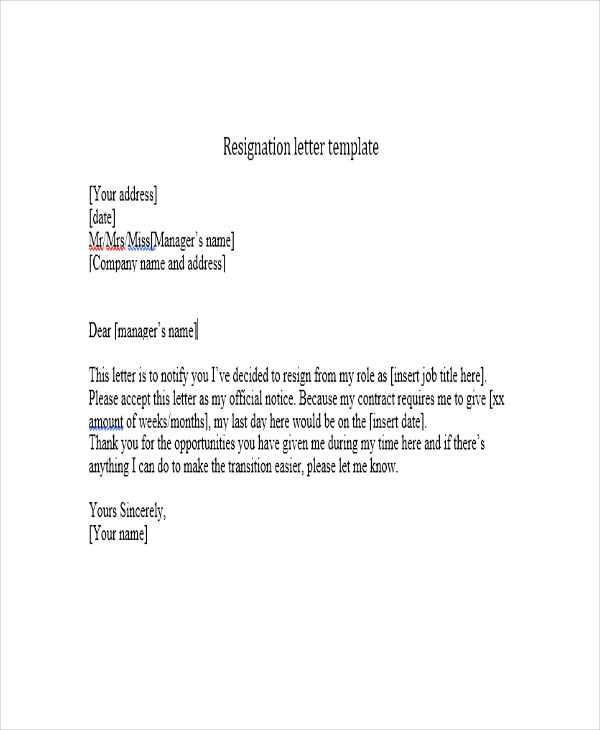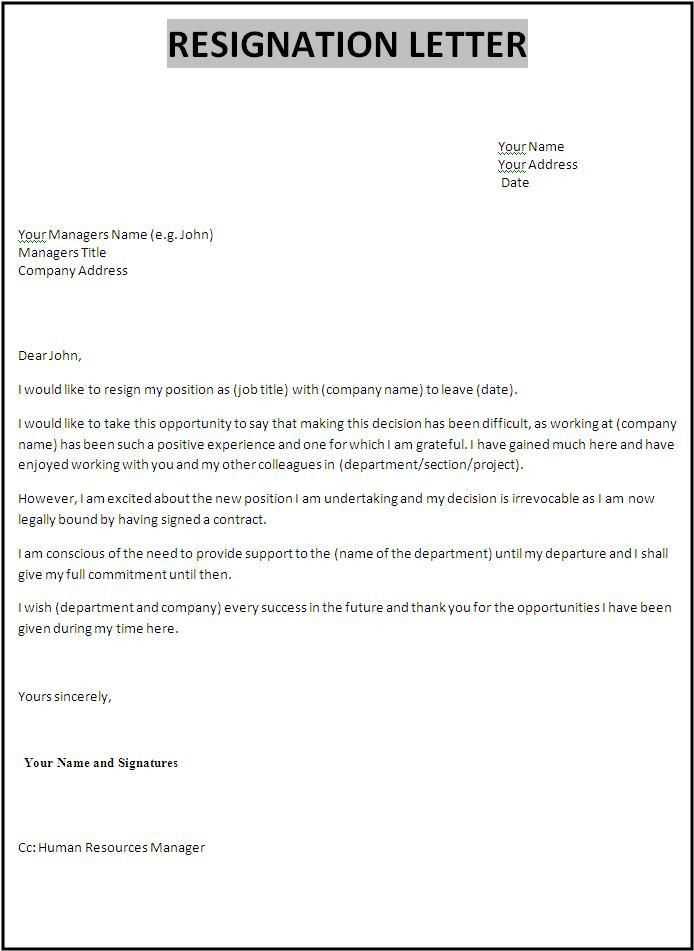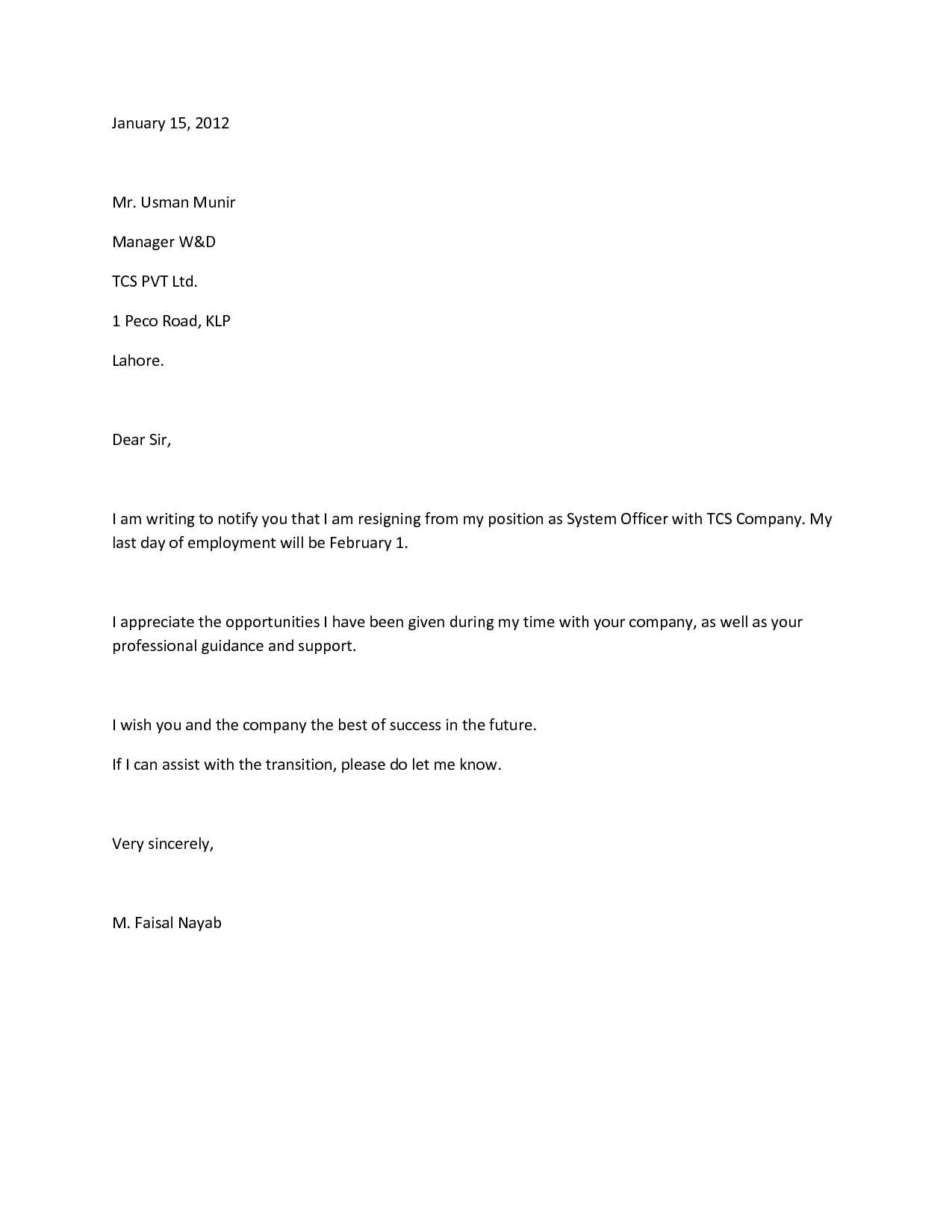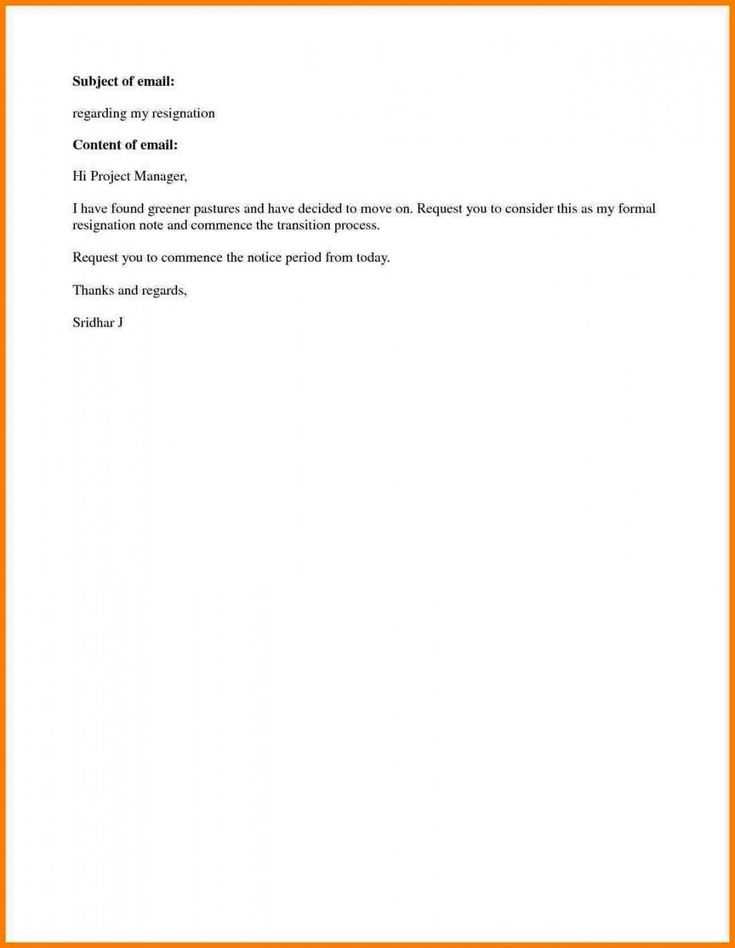Resignation template letter uk

If you’re planning to resign from your job in the UK, it’s important to submit a clear and professional resignation letter. A well-crafted resignation letter ensures that your departure is smooth and maintains a positive relationship with your employer. Here’s a simple template you can use to draft your resignation letter quickly.
Start by addressing your manager or supervisor directly. It’s best to keep your tone respectful and professional, while making sure to provide the necessary details. Clearly state the position you’re resigning from, your intended last working day, and express gratitude for the opportunities you had during your employment.
Here’s a quick guide: in the opening sentence, mention your resignation and the date you plan to leave. Follow this with a brief thank you for your time with the company. Finally, offer to assist with the transition process or train a replacement if possible, to leave a positive impression.
Here’s the revised version:
Make sure to include the date at the top of your letter. It helps your employer track the timing of your resignation notice. Begin with a simple statement of resignation. Clearly express that you are resigning and mention your position.
For example: “I am writing to formally resign from my position as [Your Job Title], effective [Last Working Day].”
Keep the tone professional and polite throughout. Avoid discussing personal reasons unless you feel it’s necessary. If you are leaving for a new opportunity, you can briefly mention that without going into detail.
Consider including a line of thanks for the opportunity. Acknowledging the positive experiences you had with the company shows professionalism, even if you’re leaving on less-than-ideal terms.
End the letter by offering your assistance with the transition process. This demonstrates your willingness to make the handover smooth and maintain a positive relationship. Close with a formal thank-you and your signature.
Here’s an example of how to structure the full letter:
Dear [Manager’s Name],
I am writing to formally resign from my position as [Your Job Title], effective [Last Working Day].
Thank you for the opportunity to be part of [Company Name]. I have enjoyed working here and appreciate the support and growth I have experienced.
Please let me know how I can assist in making this transition as smooth as possible.
Thank you again, and I wish you and the team all the best moving forward.
Sincerely,
[Your Name]
- Resignation Template Letter UK: A Practical Guide
If you’re considering resigning from your position, having a clear, concise resignation letter is key. Here’s a step-by-step guide for crafting a professional resignation letter in the UK.
- Address the right person: Always direct the letter to your line manager or the relevant HR representative. Include their name and title at the top of your letter.
- State your intention clearly: Begin by clearly stating your intention to resign and the date your resignation will be effective. For example: “I am writing to formally resign from my position as [Job Title] at [Company Name], effective [Date].”
- Give appropriate notice: UK employment law generally requires one week’s notice for employees who have been with a company for up to two years, or one month’s notice if employed for more than two years. Make sure to follow your contract’s terms regarding notice periods.
- Offer gratitude: Include a brief thank-you note to express appreciation for the opportunities you’ve had while working at the company. This helps maintain a positive relationship moving forward.
- Be professional and polite: Even if you’re leaving due to difficult circumstances, keep the tone of the letter respectful. Avoid negativity and focus on the transition ahead.
- Optional: Provide a reason: You are not required to give a reason for resigning, but if you feel comfortable, you can briefly explain why you’re leaving. Keep it professional and don’t go into too much detail.
- Wrap up with a closing: End the letter with a polite offer to assist with the transition process and a formal closing, such as: “Thank you again for the opportunity. I look forward to assisting with the handover process during my notice period.”
Here’s an example of a resignation letter template:
[Your Name] [Your Address] [City, Postcode] [Email Address] [Phone Number] [Date] [Manager’s Name] [Company Name] [Company Address] [City, Postcode] Dear [Manager’s Name], I am writing to formally resign from my position as [Job Title] at [Company Name], effective [Date]. As per the terms of my contract, I will be providing [X weeks/months] notice. I would like to take this opportunity to express my thanks for the valuable experiences and support I have received during my time at [Company Name]. It has been a pleasure working with the team, and I have learned a great deal. I am happy to assist with any handover tasks during my notice period to ensure a smooth transition. Please let me know if there’s anything specific you would like me to focus on. Thank you again for the opportunity. I wish [Company Name] continued success in the future. Yours sincerely, [Your Name]
By following these steps and using this template, your resignation letter will reflect your professionalism and respect for the company, while ensuring a smooth exit process.
A resignation letter in the UK should be concise, polite, and clear. Follow these steps to ensure your letter covers all necessary points and maintains professionalism.
1. Address the Letter Properly
- Start with your employer’s name and job title. If you’re unsure, check company records or ask someone in HR.
- Include your own name and job title beneath your employer’s name.
2. Mention Your Last Working Day
- State the date of your last working day. This should align with your notice period as per your contract (usually one month in the UK).
- Be specific and avoid vagueness. For example, “I will be finishing my employment with [Company Name] on [date].”
3. Express Gratitude
- Thank your employer for the opportunity. This keeps the tone positive, even if you’re leaving for a negative reason.
- Keep it brief, such as: “I appreciate the chance to work with the team at [Company Name].”
4. Offer Assistance in Transition
- Make it clear that you are willing to help with the handover process. For example, “I am happy to assist in training my replacement or wrapping up my ongoing projects.”
- This leaves a positive impression and shows professionalism.
5. Keep It Short and Professional
- A resignation letter doesn’t need to be long. Stick to the main points: your notice, gratitude, and willingness to assist.
- Avoid discussing personal reasons for leaving unless you feel it’s necessary or appropriate.
6. Close Politely
- End with a polite closing such as “Yours sincerely” or “Best regards.”
- Sign the letter and date it before submitting.
Here is an example format of a resignation letter:
[Your Name] [Your Address] [City, Postcode] [Email Address] [Date] [Employer’s Name] [Company Name] [Company Address] [City, Postcode] Dear [Employer's Name], I am writing to formally resign from my position as [Your Job Title] at [Company Name], effective [Last Working Day, e.g., 30th March 2025]. I want to thank you for the opportunity to work with [Company Name] and the support provided during my time here. I have learned a great deal and enjoyed working with the team. Please let me know how I can help in transitioning my responsibilities during the notice period. I am happy to assist in any way possible. Thank you again for the opportunity. Yours sincerely, [Your Name]
Your resignation letter should cover key details to maintain professionalism and clarity. Here’s what to include:
1. Clear Statement of Resignation

Begin with a direct statement of resignation, specifying your decision to leave the role. Avoid vague phrases and be clear about your intent to resign.
2. Date of Resignation
Include your final working day. Typically, you should provide two weeks’ notice, but check your contract for any specific requirements.
3. Reason for Leaving (Optional)
While not mandatory, providing a brief, polite reason for your resignation can help maintain positive relations with your employer. Keep it professional and avoid negative details.
4. Gratitude
Thank your employer for the opportunity to work with them. Expressing gratitude leaves a positive impression and helps maintain good relationships.
5. Offer Assistance in Transition
Show willingness to assist with the transition. You can offer to train a replacement or wrap up ongoing projects, which can leave a strong, cooperative final impression.
6. Contact Information
Leave your contact details in case your employer needs to reach you after your departure. It shows openness and professionalism.
7. Professional Closing

End with a formal closing like “Yours sincerely” or “Kind regards” to keep the tone respectful and professional.
8. Signature
If submitting a printed letter, remember to sign it. For digital versions, a typed signature is acceptable.
| Element | What to Include |
|---|---|
| Clear Statement of Resignation | Directly state your intention to resign. |
| Date of Resignation | Include your last working day. |
| Reason for Leaving | Optional, keep it brief and professional. |
| Gratitude | Thank the employer for the opportunity. |
| Offer Assistance | Offer to help with the transition. |
| Contact Information | Provide a way for future communication. |
| Professional Closing | End with a formal and respectful closing. |
| Signature | Sign your letter if submitting a physical copy. |
When resigning from a job in the UK, it’s important to address your notice period clearly in your resignation letter. The notice period refers to the amount of time you are required to give before leaving the job, and it is usually specified in your contract. Most employees are expected to provide one week’s notice for every year they have been employed, but this can vary depending on your role and company policy.
Key Elements to Include About Your Notice Period
1. State the exact duration of your notice period: Mention whether you are fulfilling the standard notice period or if you’re negotiating a shorter or longer term. Be specific about the start and end dates of your notice period. For example, “I am providing one month’s notice, and my final day of work will be [date].”
2. Clarify the reason for leaving: While not mandatory, briefly explain why you are resigning. If it’s for personal reasons or to pursue a new job opportunity, state it clearly but professionally. A simple line like, “I have decided to pursue a new opportunity” is sufficient.
Things to Keep in Mind
3. Check your contract: Always refer to your employment contract to ensure you are complying with the correct notice period. If you’re unsure, consult your HR department or manager.
4. Be open to negotiation: In some cases, employers may be willing to shorten your notice period or allow you to leave earlier. However, this is something you’ll need to discuss and agree upon.
Always use a formal and respectful salutation when addressing your employer in your resignation letter. If you are resigning from a company where you directly report to a manager, begin with “Dear [Manager’s Name].” If you’re unsure of who will read the letter, a general approach such as “Dear [Company Name] Team” works as well.
Make sure to use the correct title for your employer, whether it’s a formal title like “Mr.,” “Ms.,” or “Dr.” If you’re writing to a senior executive or HR, ensure the tone stays professional and courteous. If you have a close relationship with the recipient, a slightly less formal tone can be used, but always maintain respect.
Avoid casual greetings such as “Hi” or “Hello,” as they may come across as too informal for a resignation letter. Keep it respectful but concise, maintaining the professional nature of the communication throughout.
In the UK, it’s crucial to follow the proper process when submitting your resignation. You must provide your employer with written notice, adhering to the notice period stated in your contract. If no notice period is specified, the standard minimum notice period is one week for employees who have been with the company for less than two years, and one week for each full year of employment for those with two years or more.
Timing of Submission
Resignations should be submitted during working hours, typically by email or in person. Submit your resignation at least one week before your planned departure date, unless your contract specifies a longer notice period. If you want to leave sooner, your employer may agree to waive the notice period, but this must be confirmed in writing.
How to Submit Your Resignation

Your resignation should be clear and professional. A formal resignation letter is the best way to communicate your decision. Avoid personal or negative comments, focusing solely on the fact that you are resigning and providing the notice period as required.
| Resignation Letter Tips | Description |
|---|---|
| Be Clear | State your intent to resign and your planned last working day. |
| Stay Professional | Keep the tone polite and avoid any negative comments about the company or colleagues. |
| Follow Contract Terms | Make sure you comply with the notice period as outlined in your employment contract. |
| Offer to Help Transition | Offer assistance with the handover process to leave on good terms. |
Don’t make it too long. A resignation letter should be brief and direct. Avoid unnecessary explanations or details about why you’re leaving. Keep it to the point, and only mention the essentials like your departure date and a note of gratitude.
Stay professional. Even if you have negative feelings about your role or the company, keep the tone polite and respectful. Burning bridges can hurt your reputation. Focus on the positive aspects of your experience and the skills you’ve gained.
Avoid vague statements. Be specific about your last working day and any transition plans. General phrases like “I’m leaving soon” or “I’ll be gone shortly” create confusion and could delay the process. Clarity is key to a smooth transition.
Don’t leave without offering assistance. A resignation letter isn’t just about informing your employer. Offer to help during the transition period, such as training a replacement or assisting with handover tasks. This shows professionalism and goodwill.
Don’t forget to proofread. A resignation letter full of typos or grammatical errors can leave a bad impression. Before sending it, read through the letter to make sure everything is clear and polished.
Don’t skip the subject line. In email resignation letters, a clear subject line is important. Something simple like “Resignation – [Your Name]” ensures the recipient knows the purpose of the email right away.
Thus, the repetition of the words “Resignation Letter” is limited, and the structure maintains its meaning.
Keep your resignation letter concise and professional. Focus on clearly stating your intention to resign, followed by key details like your last working day. This keeps the document clear without unnecessary repetition of the phrase “Resignation Letter.” Mentioning your reason for leaving is optional, but if you choose to include it, keep it brief and positive.
Structure and Tone
Start with a formal salutation and express your decision to resign in the opening sentence. Avoid excessive formality but ensure the tone remains respectful. Clearly state your departure date to avoid confusion. If applicable, offer assistance during the transition period. Conclude by expressing appreciation for the opportunity.
Key Points to Include
- Your intention to resign
- Your last working day
- Offer of assistance during the transition (optional)
- A thank you for the opportunity
By following these guidelines, your resignation letter will be professional and straightforward, without overusing the term “Resignation Letter.”